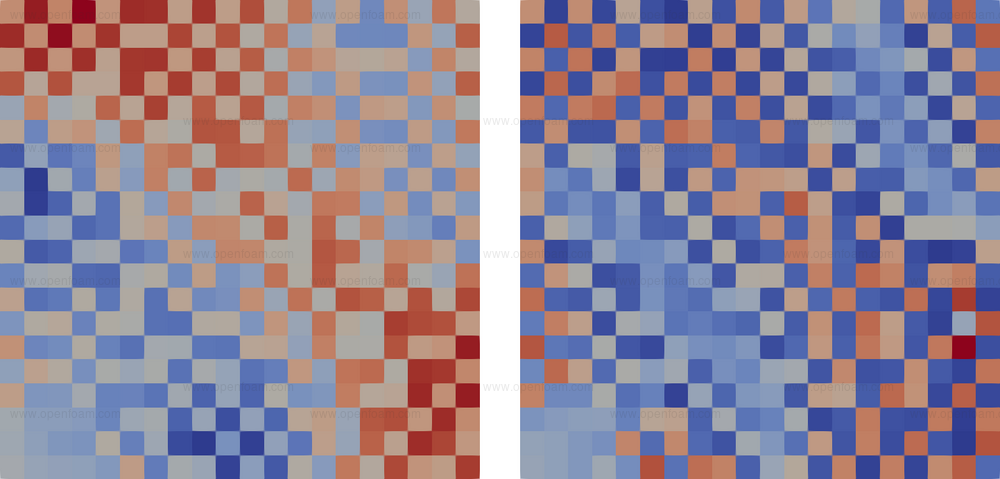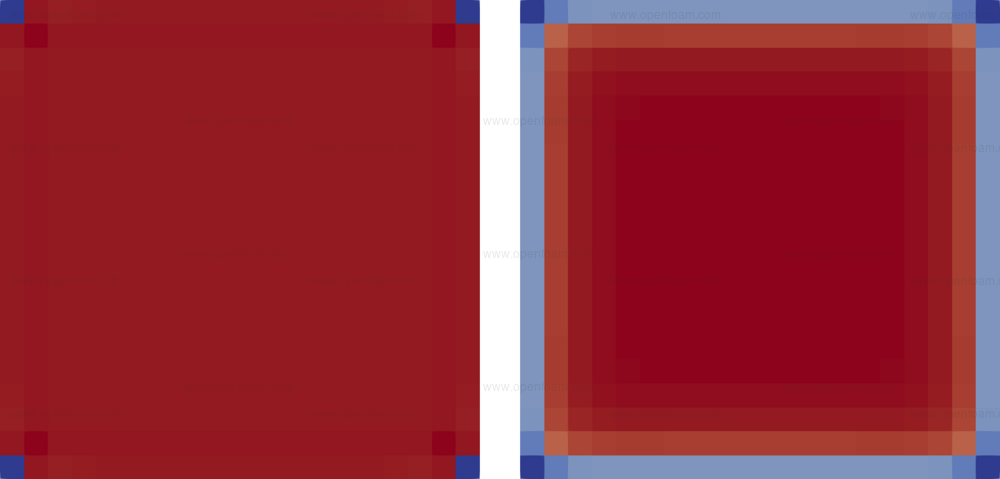v2106: New boundary conditions
Input methods for the turbulentDFSEMInlet boundary condition have been expanded and made more flexible:
- Input entries of R, L and U are now PatchFunction1 type, which is the most generalised input methodology available for patch fields in OpenFOAM.
- Adds two new default entries of scalar quantities as normalisation factors for R, L and U:
- Uref : characteristic (reference) scale speed (default value = 1)
- Lref : characteristic (reference) length (default value = 1)
- These two entries scale the input R, L, and U: e.g. R/Uref^2, L/Lref, and U/Uref.
- Adds a new scalar factor to enable users to tune the C1 normalisation coefficient:
- scale: scales the C1 coefficient (default value = 1)
- Replaces chan395DFSEM and PCF tutorials with planeChannel and oneCellThickPlaneChannel tutorials to enable users to reproduce the reported results.
- Corrects the integral-length scale input files. A set of results obtained from the planeChannel tutorial (plot script available to users) can be seen below:


Source code
Tutorial
Optional under relaxation and minimum jump values have been added to the fan jump boundary conditions. Under relaxation can significantly improve numerical stability for steady cases, when applying a non-uniform spatial jump.
The following images show the predicted pressure and velocity fields for a steady, square-pipe case, at the jump plane located half way along the pipe. The first pair show that, for a non-uniform jump, the case is unstable and leads to checker board instabilities:

When setting applying under-relaxation, the case evolves smoothly to the expected pressure and velocity profiles:

Usage
plane
{
type fan;
patchType cyclic;
jump uniform 0;
value uniform 0;
uniformJump false;
// Optional minimum jump value
minJump 0;
// Optional under-relaxation
relax 0.2;
...
}
Source code
- $FOAM_SRC/finiteVolume/fields/fvPatchFields/derived/fixedJump
- $FOAM_SRC/finiteVolume/fields/fvPatchFields/derived/fan
Tutorial
A new pair of boundary conditions for multiphase flows has been developed to update p_rgh and U to mimic open and close events.
The switch in behaviour between prghTotalPressure and fixedFluxPressure is triggered by the Volume of Fluid (VOF) field, alpha. When the value of alpha at the patch exceeds alphaMin a wall condition is imposed; otherwise, a total pressure condition is applied. This combination reproduces the behaviour of a fully open or closed permeable wall.
Usage
The specification for p_rgh is as follows:
rightWall
{
type prghPermeableAlphaTotalPressure;
alpha alpha.water;
alphaMin 0.01;
p uniform 0;
value uniform 0;
}
The specification for U is as follows:
rightWall
{
type permeableAlphaPressureInletOutletVelocity;
alpha alpha.water;
alphaMin 0.01;
value uniform (0 0 0);
}
Source code
- $FOAM_SRC/finiteVolume/fields/fvPatchFields/derived/prghPermeableAlphaTotalPressure/
- $FOAM_SRC/finiteVolume/fields/fvPatchFields/derived/pressurePermeableAlphaInletOutletVelocity/
Tutorials

